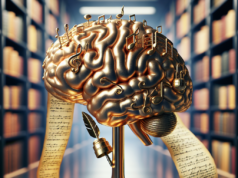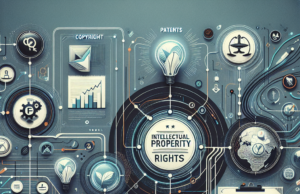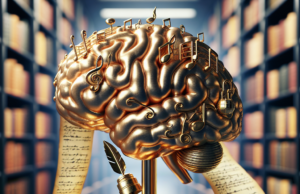Table of Contents
- 1 The Evolution of Educational Reforms: A Historical Overview of Children’s Learning
- 2 Unveiling the Shocking Truths: What Current Research Reveals About Education Methods
- 3 The Role of Technology in Transforming Learning Environments for Children
- 4 Addressing Inequality: How Education Reforms Aim to Bridge the Achievement Gap
- 5 The Impact of Mental Health on Learning: A Critical Component of Educational Reform
- 6 Future Directions: Innovative Strategies for Enhancing Children’s Educational Experiences
In recent years, the landscape of children’s education has undergone significant transformations, driven by a confluence of research, technology, and a growing awareness of the diverse needs of learners. As educational reforms continue to evolve, it is imperative to examine the underlying truths that shape these changes. This article explores the historical context of educational reforms, current research findings, the role of technology, efforts to address inequality, the impact of mental health, and innovative strategies for the future of children’s learning.
The Evolution of Educational Reforms: A Historical Overview of Children’s Learning
The history of educational reforms is a tapestry woven with the threads of societal change, pedagogical theories, and the evolving understanding of child development. From the establishment of compulsory schooling in the 19th century to the progressive education movement of the early 20th century, each era has sought to adapt educational practices to meet the needs of its time. The latter half of the 20th century saw a shift towards standardized testing and accountability measures, which, while intended to ensure quality, often led to a narrow focus on rote memorization. Today, there is a renewed emphasis on holistic education that prioritizes critical thinking, creativity, and emotional intelligence, reflecting a broader understanding of what it means to be educated in a rapidly changing world.
Unveiling the Shocking Truths: What Current Research Reveals About Education Methods
Recent research has unveiled startling truths about traditional education methods, challenging long-held beliefs about how children learn best. Studies indicate that a one-size-fits-all approach is ineffective, as children possess diverse learning styles and paces. Furthermore, research highlights the importance of active learning, where students engage with materials through hands-on experiences rather than passive absorption of information. The findings suggest that fostering a growth mindset—encouraging students to view challenges as opportunities for development—can significantly enhance motivation and academic performance. These insights call for a reevaluation of current educational practices and the adoption of more personalized, student-centered approaches.
The Role of Technology in Transforming Learning Environments for Children
Technology has emerged as a powerful catalyst for change in educational settings, offering innovative tools that can enhance learning experiences. The integration of digital resources, such as interactive simulations, educational apps, and online collaboration platforms, allows for a more engaging and personalized approach to education. Moreover, technology facilitates access to a wealth of information, enabling students to explore subjects at their own pace and according to their interests. However, the digital divide remains a critical concern, as not all students have equal access to these resources. As educators embrace technology, it is essential to ensure that it complements traditional teaching methods and addresses the diverse needs of all learners.
Addressing Inequality: How Education Reforms Aim to Bridge the Achievement Gap
Inequality in education has long been a pressing issue, with disparities in resources, opportunities, and outcomes for students from different socioeconomic backgrounds. Recent reforms aim to bridge the achievement gap by implementing policies that promote equity and inclusivity. Initiatives such as increased funding for under-resourced schools, targeted support for at-risk students, and the incorporation of culturally relevant curricula are designed to create a more level playing field. Additionally, community partnerships and family engagement are being prioritized to foster a supportive environment for all learners. By addressing systemic inequities, education reforms seek to ensure that every child has the opportunity to succeed, regardless of their background.
The Impact of Mental Health on Learning: A Critical Component of Educational Reform
The recognition of mental health as a critical component of educational reform marks a significant shift in how we view children’s learning environments. Research has shown that mental health issues, such as anxiety and depression, can severely hinder academic performance and overall well-being. As a response, many educational systems are beginning to incorporate mental health support into their frameworks, providing resources such as counseling services, social-emotional learning programs, and training for educators to recognize and address mental health challenges. By prioritizing mental health, schools can create a nurturing atmosphere that promotes resilience, emotional regulation, and ultimately, better academic outcomes for students.
Future Directions: Innovative Strategies for Enhancing Children’s Educational Experiences
Looking ahead, the future of children’s education is poised for further innovation as educators and policymakers explore new strategies to enhance learning experiences. Approaches such as project-based learning, where students engage in real-world challenges, and interdisciplinary curricula that connect subjects in meaningful ways are gaining traction. Additionally, the rise of personalized learning—tailoring education to individual student needs—holds promise for fostering deeper engagement and understanding. As educational reforms continue to evolve, collaboration among educators, parents, and communities will be essential in creating dynamic learning environments that prepare children for the complexities of the future.
As we navigate the complexities of educational reform, it is crucial to remain informed about the evolving landscape of children’s learning. By understanding the historical context, embracing research-driven practices, leveraging technology, addressing inequality, prioritizing mental health, and fostering innovative strategies, we can work towards a more equitable and effective educational system. The shocking truths behind current educational methods serve as a call to action for all stakeholders to collaborate in revolutionizing learning for the next generation.























